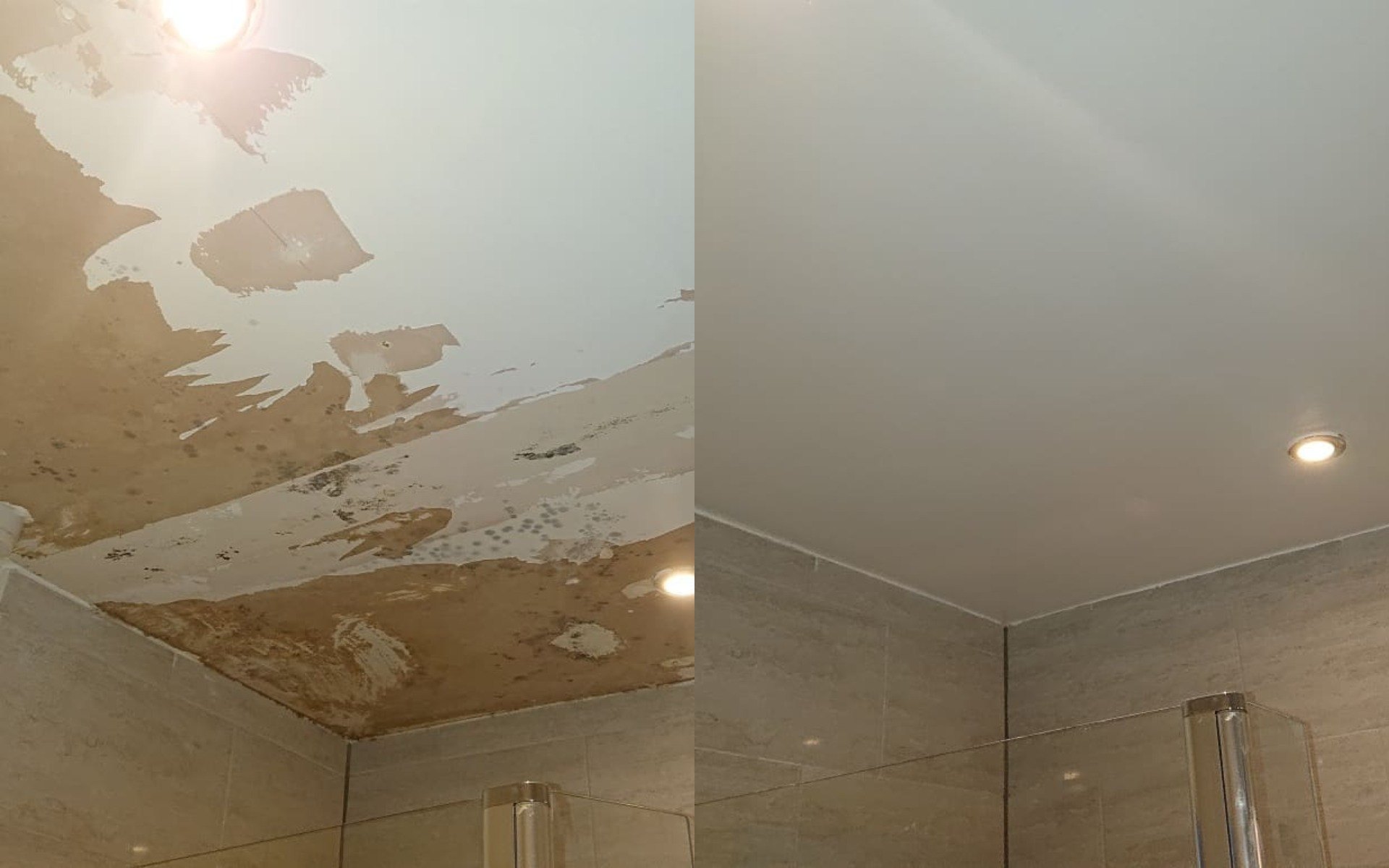Understanding the Cause of Bubbling Paint: How To Fix Bubbling Paint On Bathroom Ceiling

Yo, so your bathroom ceiling’s got these nasty bubbles in the paint? It’s like a bad case of acne, but way worse. We gotta figure out what’s causing this mess before we can fix it.
The most common culprit? Moisture. Bathrooms are like hotboxes for humidity, and that can wreak havoc on your paint job. When water vapor gets trapped in the paint, it expands and creates those unsightly bubbles.
Humidity and Condensation
Think about it. You’re taking a hot shower, steam’s rising, and that’s where condensation comes in. It’s like water vapor turning back into liquid, and it can stick to your ceiling. If the paint isn’t properly sealed, that moisture can seep in and cause those bubbles.
Materials Contributing to Moisture Problems
Some materials are just begging for moisture issues. Like a poorly sealed shower or bathtub. If water can leak through the grout or caulk, it’s going to find its way to your ceiling. And that’s bad news for your paint.
Preparing the Ceiling for Repair
Yo, so before you start slapping on that fresh paint, you gotta prep that bathroom ceiling like a pro. Think of it like getting ready for a big game – you gotta have the right gear and make sure the field is smooth and ready for action.
First things first, you gotta make sure that ceiling is clean and ready to roll. You’ll need to remove any loose paint, scrape off any bubbly or peeling bits, and give it a good scrub to get rid of any dust or grime.
Removing Loose Paint, How to fix bubbling paint on bathroom ceiling
You can’t just paint over loose paint – it’s like building a house on a shaky foundation. It’s gonna crumble, and your fresh paint job will be a total mess. So, before you even think about grabbing a paintbrush, you gotta remove all the loose paint.
You can do this by gently scraping it off with a putty knife or a paint scraper. Be careful not to scratch the ceiling, though. If the paint is really stubborn, you can use a heat gun to soften it up a bit.
Scraping the Affected Area
Once you’ve removed the loose paint, you need to scrape the affected area. This will help to create a smooth and even surface for the new paint. Use a scraper, like a putty knife, to gently scrape away any remaining bubbles or peeling paint.
You want to scrape until you reach the bare ceiling. Don’t be afraid to use a little elbow grease – it’ll be worth it in the end. After scraping, you’ll need to use sandpaper to smooth out the area.
Cleaning the Surface
After you’ve scraped the ceiling, you need to give it a good cleaning. This will remove any dust, dirt, or debris that could interfere with the adhesion of the new paint. You can use a damp cloth or a sponge to wipe down the surface. Make sure to let the ceiling dry completely before moving on to the next step.
Applying Primer
Alright, now that the ceiling is all clean and prepped, it’s time to apply a primer. Think of primer like the glue that holds everything together. It helps the new paint stick to the ceiling, preventing it from bubbling up again.
Apply a thin coat of primer to the entire area you’re going to paint. Let it dry completely before you start painting.
Applying New Paint
You’ve prepped the ceiling, now it’s time to make it look fresh and clean again. This is where the fun part comes in – painting! But before you start splashing color, you gotta make sure you’re using the right stuff and applying it correctly.
Choosing the Right Paint
Choosing the right paint for your bathroom ceiling is crucial. Bathrooms are known for their humidity, so you want a paint that can handle the moisture.
Here’s the deal: You’ll want to go with a paint that’s specifically designed for bathrooms or high-moisture areas. This type of paint is usually labeled as “bathroom paint,” “kitchen and bath paint,” or “moisture-resistant paint.”
Applying the Paint
Once you’ve got the right paint, you need to apply it properly. This is where the magic happens. You don’t want to just slap it on there – it needs to be done with care and precision.
Here’s the key: Apply thin coats of paint, and let each coat dry completely before applying the next. If you try to apply too much paint at once, it’ll likely end up bubbling and cracking again, and that’s a total bummer.
Getting a Smooth Finish
Now, let’s talk about achieving that smooth, even finish. This is where your paint roller and brush come in handy. They’re your tools for a flawless look.
Here’s the secret: Use a paint roller for the majority of the ceiling, and a brush for the edges and corners. This combo will help you get a smooth, even finish without any streaks or drips.
